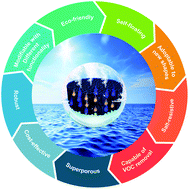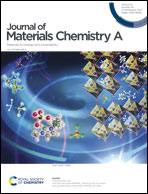Aerogels in passive solar thermal desalination: a review
Abstract
Driven by renewable energy, solar-thermal technology holds promising potential for effective freshwater production with a reduced carbon footprint. In this technology, solar energy is localized at the air–water interface of the solar-thermal conversion material. Despite many technical advantages, this technology suffers from huge energy loss that restrains the water productivity and overall efficiency through sequential water evaporation and condensation. Water evaporators should be designed with open and unidirectional porous structures to transport water molecules quickly. Hence, blocking of water transport channels due to salt accumulation, subsequently causing reduction of solar absorption, is another bottleneck in thermally localized solar desalination devices. Toxic volatile organic compounds (VOCs) and microorganisms in natural water resources can also penetrate the distillate and pollute it. Self-floating on the water surface and mechanical stability for long service life are two other essential features that must be considered for the fabrication of solar evaporators. Recently, the emergence of aerogel-based water evaporator platforms has created an exciting opportunity to overcome some of the challenges of solar steam generation systems mentioned above. Aerogels inherently possess interconnected big open pores and high thermal insulation properties. As a consequence, steam generation can be rapidly achieved using aerogels with minimal heat loss. Other excellent characteristics like very low apparent densities and large specific surface area make them favorable candidates for solar steam generation. This review paper highlights the recent progress in aerogel-based solar evaporator platforms for pure water production processes. Herein, we discussed different beneficial characteristics of aerogels in the solar steam generation process, including high porosity, low cost, versatility, environmental friendliness, and self-floating, in detail. Two critical issues, including anti-salt-fouling and the removal of VOCs, are evaluated in the last part of this study to explore the long-term performance of the engineered aerogel in clean water production. In the last section, we have explained the current challenges and future opportunities for fundamental research and practical applications of aerogel-based solar water purification systems.



 Please wait while we load your content...
Please wait while we load your content...